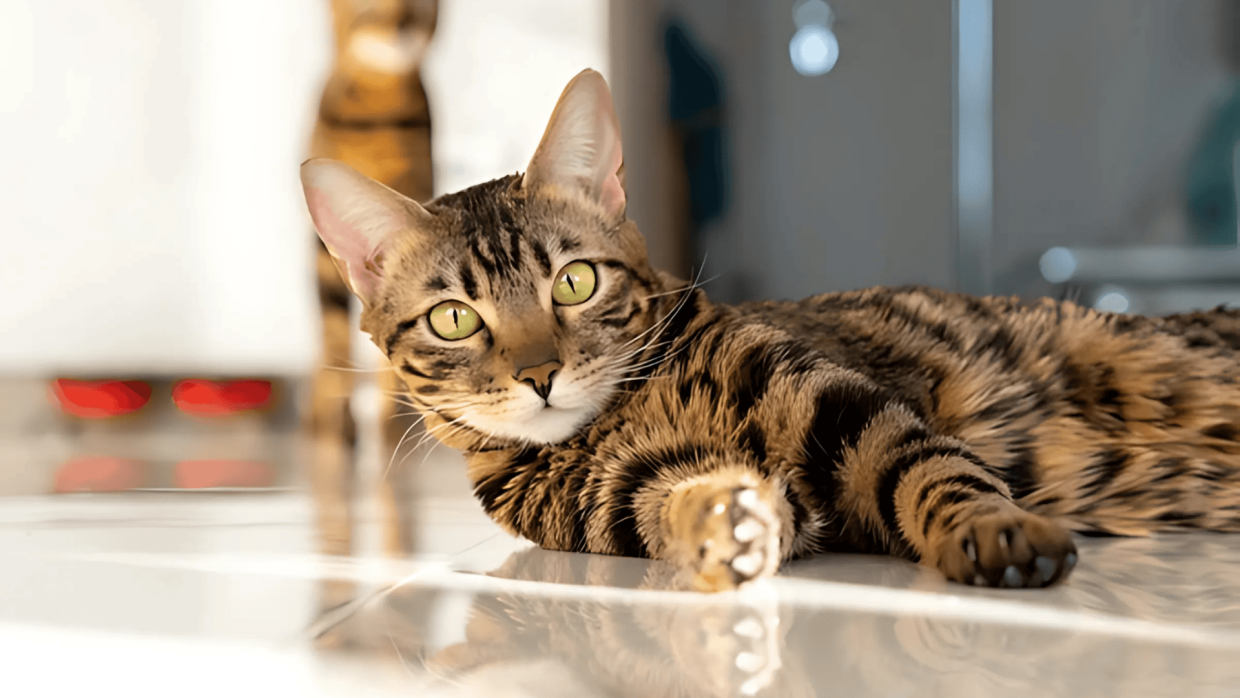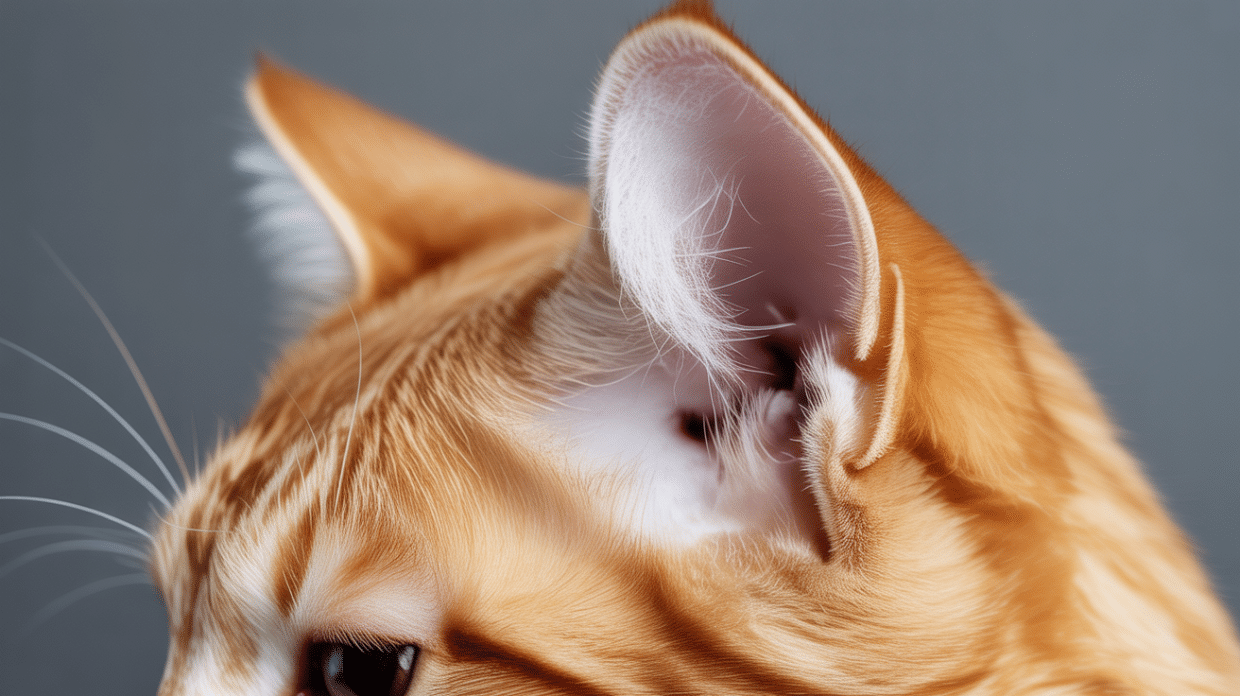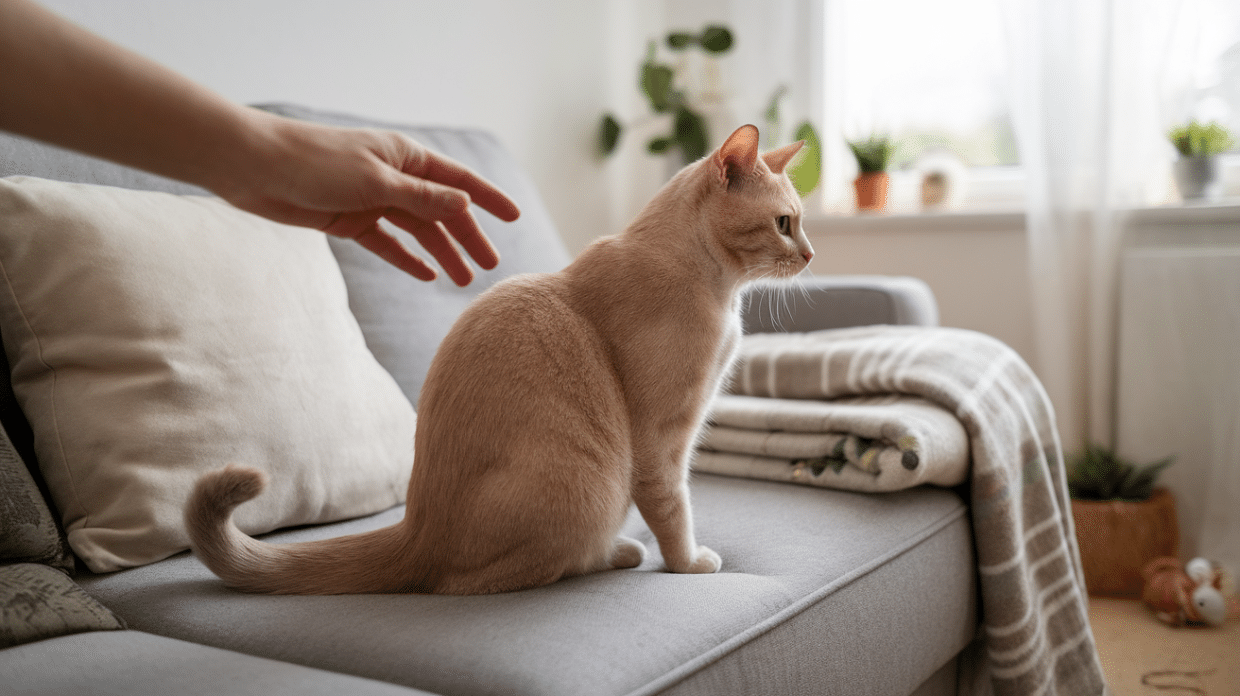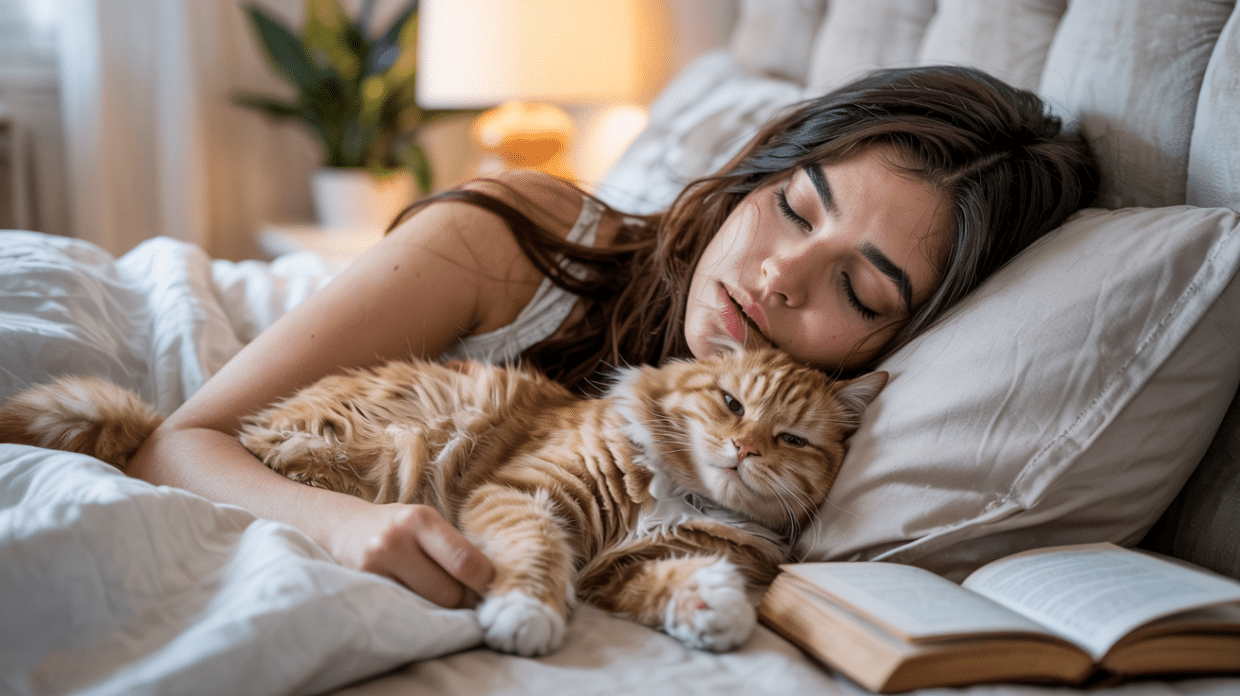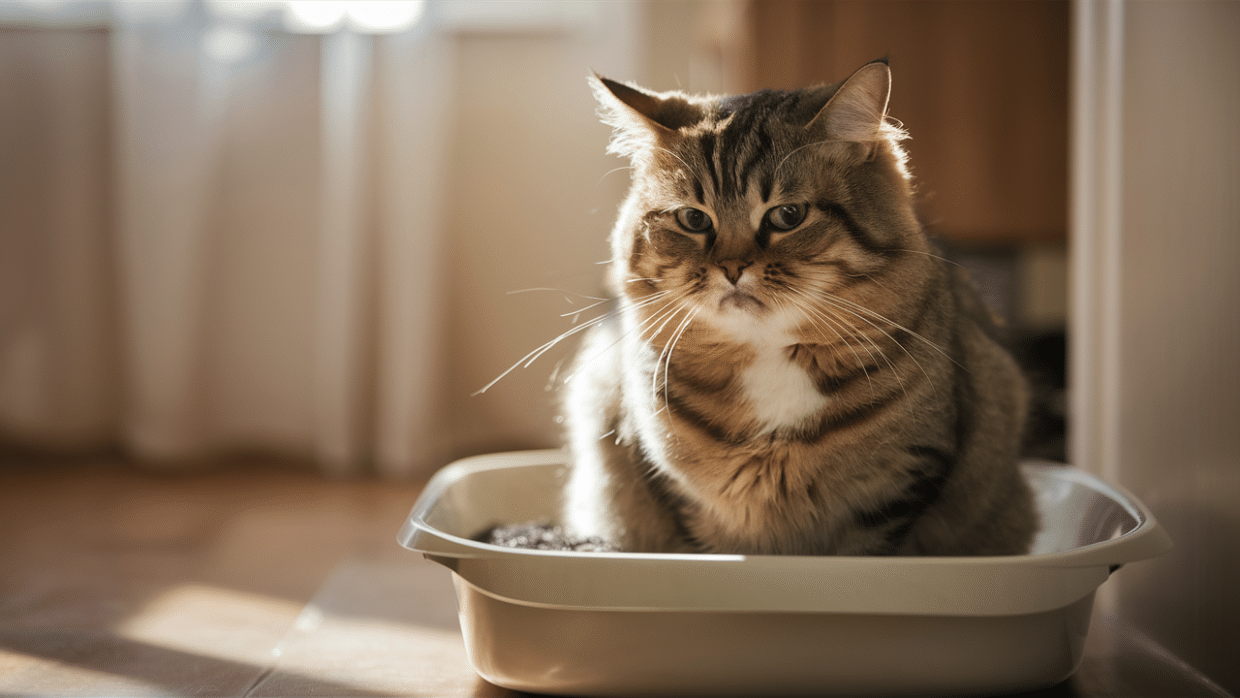The Marble Bengal cat is a unique and striking variation of the Bengal breed. It is known for its beautiful swirling coat pattern.
Unlike the typical spotted Bengal, the marble Bengal’s fur features flowing, wave-like patterns that resemble mini leopards.
This eye-catching design has become a favorite among cat lovers due to its elegance and wild appearance.
While there are no naturally marbled Asian leopard cats, the marble gene was introduced in the 1980s when the Bengal breed was developed.
Today, these cats are celebrated for their distinct look, making them a sought-after choice for those who admire their pets’ beauty and personality.
The Origins and History of the Marble Bengal
The Bengal breed was created by crossbreeding the wild Asian leopard cat with domestic cats.
The goal? Combine the leopard’s wild look with a house cat’s friendly nature.
But here’s where it gets interesting. In 1987, something special happened – the first marbled Bengal appeared.
This wasn’t just any Bengal. Its swirling, beautiful coat pattern stood out from the usual spotted ones.
Jean Mill, the mastermind behind the Bengal breed, initially focused on producing spotted Bengals.
But she shifted gears when the marbled pattern caught everyone’s attention at cat shows. The demand was too strong to ignore.
Soon after, the marbled Bengal pattern was officially added to the breed standard.
The Bengal, including the marbled version, gained full recognition from major cat associations like TICA and CFA, securing its place in the world of cat lovers.
What Makes a Marble Bengal Special?
The marbled Bengal cat stands out for its unique coat pattern. Instead of spots, it has swirling, random markings that look like soft waves or flowing lines across its body.
This gives the cat a wild, exotic look, like a mini leopard, setting it apart from the more common spotted Bengal.
Tri-Colored Marbles
A key feature of the marbled pattern is the use of three distinct colors. These colors include:
- The background color of the coat
- The markings that create the marbled effect
- An outlining color around the markings adds depth and contrast. This combination creates a rich, multi-toned appearance that makes marbled Bengals so striking.
Sharp Contrast and Definition
High-quality marble Bengals are known for their sharp contrast and well-defined markings.
The pattern’s strong horizontal flow is a sign of top-quality marble, which is minimally influenced by domestic tabby patterns.
The markings are clear, crisp, and random, without any circular or bulls-eye shapes, further enhancing their wild and unique look.
Genetic Background of the Marble Bengal
The Role of the Agouti Gene
The agouti gene plays a key role in creating the tabby pattern in many cats, including the Bengal.
This gene causes the fur to be “ticked,” meaning each hair has light and dark pigment bands.
The agouti gene gives the coat its depth and texture, creating the alternating patterns seen in tabby cats, like the marbled design in Bengals.
The Concept of “Rufousing”
“Rufousing” refers to a genetic trait that warms up the background color of a cat’s coat.
Breeders select for rufousing to achieve a rich, orangish-gold color in the background of a Bengal’s coat.
This effect is especially noticeable in brown tabby Bengals, giving them a warm, glowing appearance that enhances their overall beauty.
The Non-Agouti Gene
The non-agouti gene works oppositely to the agouti gene. Instead of creating the ticked fur pattern, it suppresses it, producing solid-colored fur.
This gene results in a coat with consistent color throughout the hair shaft rather than having the typical tabby banding.
This gene helps produce a solid-colored or darker coat in Bengals, but it’s recessive and less common than the agouti gene.
Different Types of Tabby Patterns
Mackerel Tabby
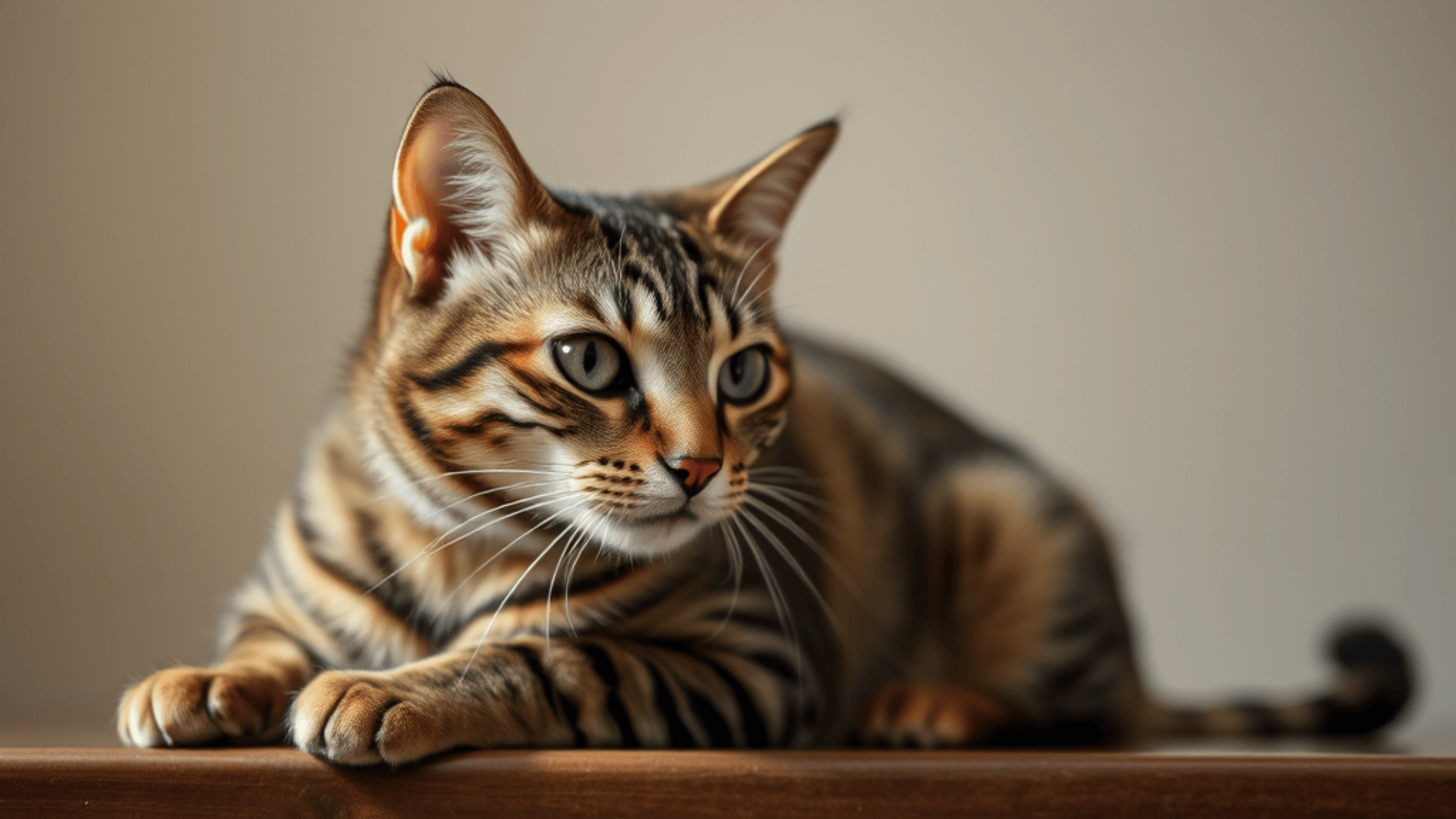
The mackerel tabby pattern features narrow, parallel stripes running down the sides of the cat’s body, resembling a tiger’s stripes.
This is one of the most common tabby patterns, with the stripes evenly spaced and consistent across the coat.
Classic Tabby

Classic tabby cats have a blotched pattern, often forming a round “bullseye” shape on their sides.
This pattern can be compared to a swirling or marble-like look but with more defined, circular shapes.
The classic tabby also has the iconic “M” marking on its forehead and a butterfly-shaped marking on its back.
Ticked Tabby
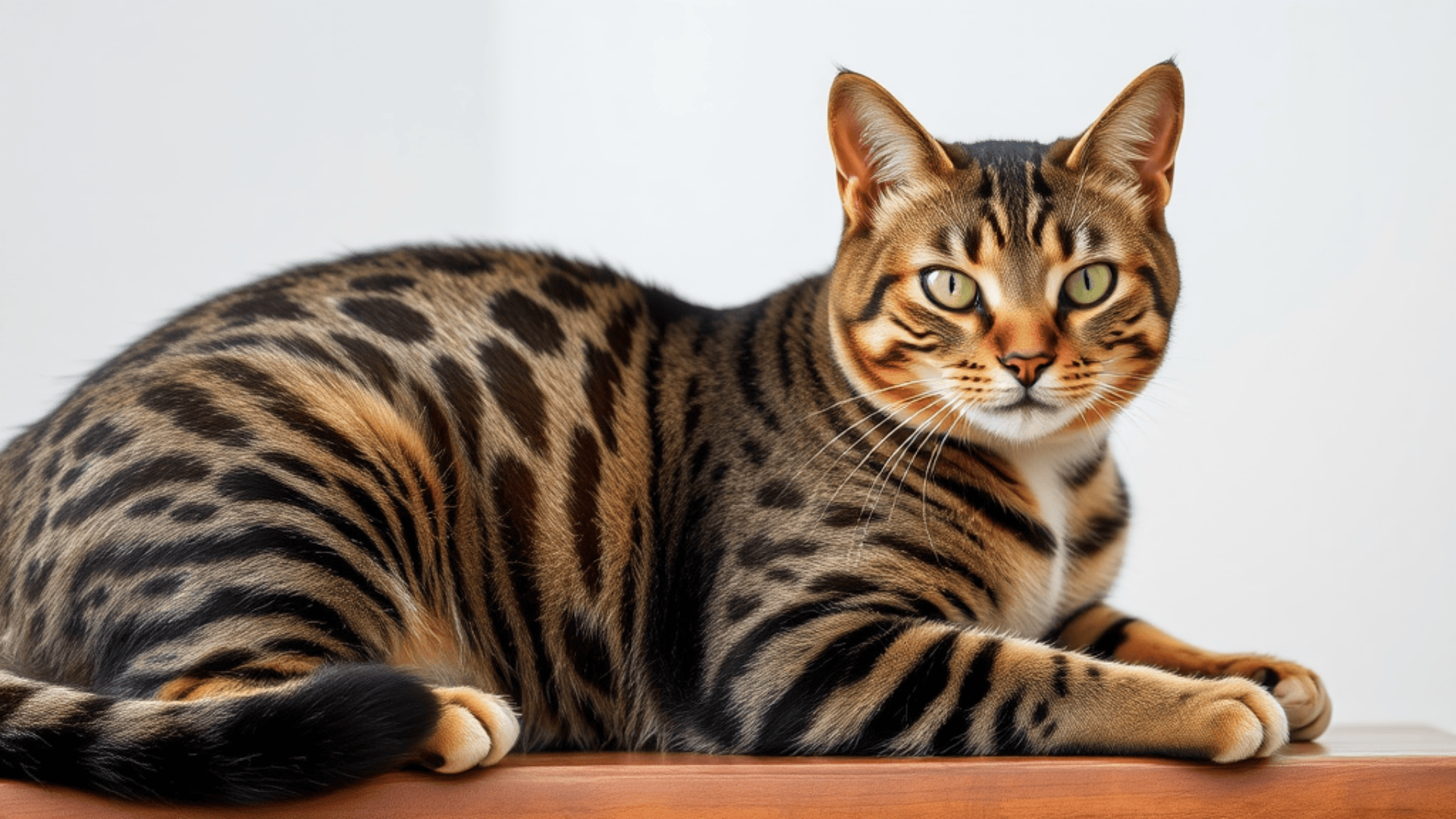
The ticked tabby pattern consists of evenly speckled fur with lighter and darker bands, giving the coat a freckled or glowing appearance.
This pattern is often seen in breeds like the Abyssinian, where the fur appears solid but has a subtle, varied texture due to the banding.
Spotted Tabby
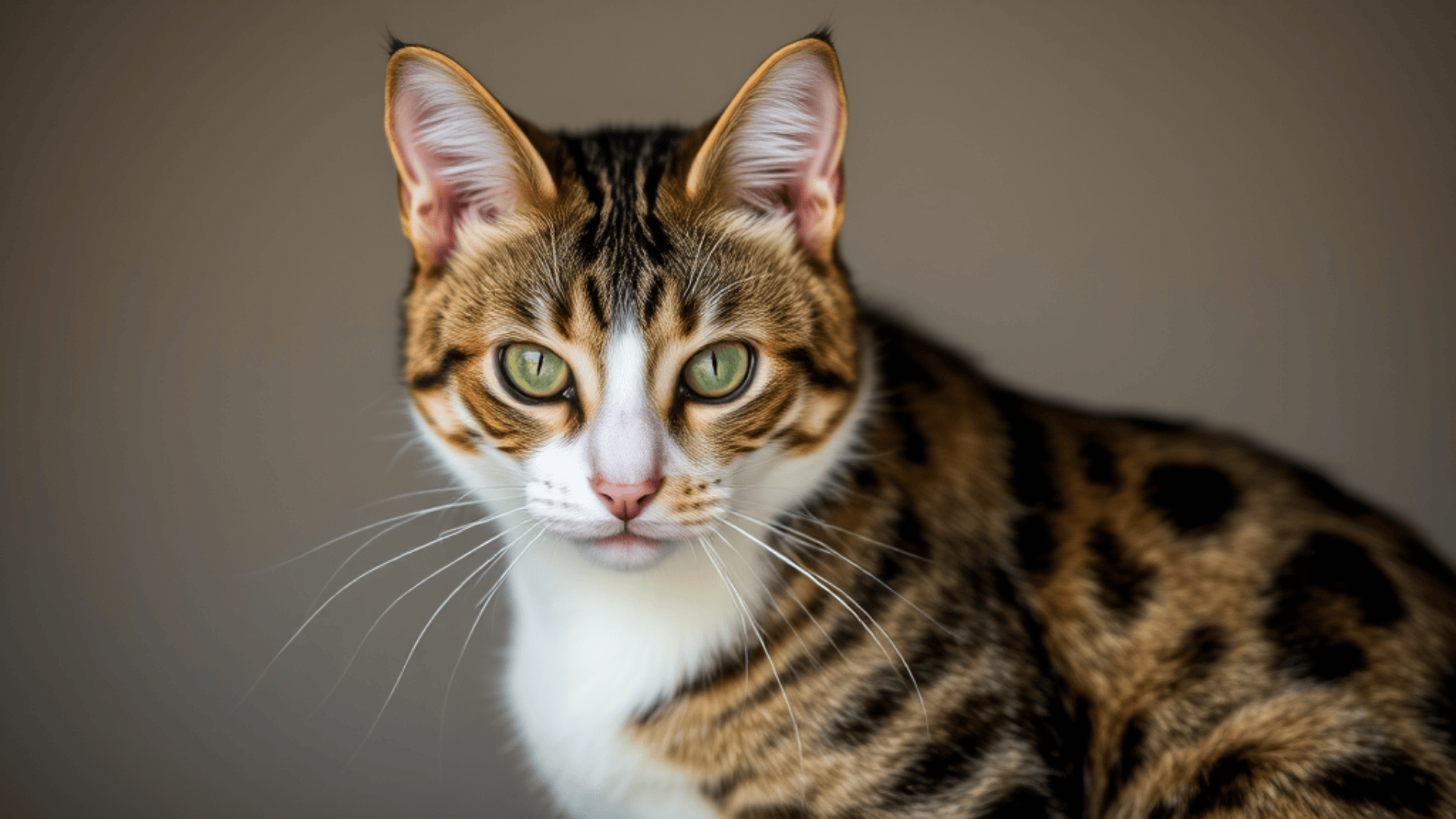
Spotted tabby cats have spots or rosettes spread across their bodies, similar to a leopard’s coat.
The ticking pattern forms these spots and is often round or oval, giving the cat a wild, spotted appearance.
How the Marbled Bengal Fits In
The marbled Bengal is a unique variation of the classic tabby pattern.
Unlike the classic tabby, which has a circular bullseye, the marbled Bengal features random, flowing swirls or waves across its body, giving it a softer, more fluid look.
While still technically part of the classic tabby category, the marbled pattern in Bengals stands out for its distinctive swirling design, making it a sought-after and elegant variation.
Breeding and Producing Top-Quality Marbles
Selecting the Right Genetics
Selecting the right genetics is essential for producing top-quality marble Bengals. Breeders focus on pairing cats with strong, distinct, marbled patterns and desirable features.
The goal is to enhance the natural, wild look of the Bengal, emphasizing the marbled design without the influence of less desirable traits like the traditional domestic tabby markings.
Breeding Practices
Breeders work to minimize the influence of domestic tabby traits by carefully selecting cats with minimal tabby markings, focusing on those with clear, sharp marbling and strong horizontal flow in their coat pattern.
It’s also important to choose Bengals with minimal “bullseye” or vertical spot patterns, as these can distract from the smooth, flowing, marbled design that defines the breed.
Example Breeders: Foothill Felines
Foothill Felines is an example of a breeder that focuses on producing healthy, well-defined marble Bengals.
They carefully select breeding pairs that produce high-quality marbled patterns and emphasize genetic traits that enhance the Bengal’s exotic, wild look.
Their breeding program is designed to produce Bengals with sharp contrast, distinct markings, and strong horizontal flow, ensuring top-quality marble Bengals for their clients.
Caring for a Marble Bengal
- Brushing: Marble Bengals have short, sleek coats that are easy to maintain with regular brushing. Aim for once or twice a week to remove loose hairs and prevent matting.
- Bathing: While not often necessary, occasional bathing can help maintain the coat’s shine and remove any dirt or oils. Use a gentle cat shampoo.
- Nail and Ear Care: Regular nail trims and ear cleaning are important to keep your Bengal comfortable and healthy.
- Active Play: Marble Bengals are very energetic and love to play. Provide them with plenty of toys, such as feather wands, puzzle feeders, and interactive games that mimic hunting behavior.
- Climbing and Exploration: These cats enjoy climbing, so providing cat trees or shelves can keep them physically engaged. They love exploring and need lots of space to roam.
- Training: Due to their high intelligence, marble Bengals can be trained to do tricks or walk on a leash, offering mental stimulation and building a bond with their owner.
- High-Quality Diet: Because of their active nature, marble Bengals need a diet that is high in protein to support their energy levels. Look for food with chicken, turkey, or fish as the main ingredient.
- Portion Control: It’s important to feed them the right portions to maintain a healthy weight. Overfeeding can lead to obesity, especially with their high energy and tendency to burn off calories quickly.
- Fresh Water: Make sure they have access to fresh water at all times, as staying hydrated is important for their overall health.
What to Look for in a Top-Quality Marble Bengal
When searching for a high-quality marble Bengal, there are a few key features to keep in mind:
Strong Horizontal Flow
The pattern should flow horizontally across the cat’s body, giving it a natural, wild appearance.
Look for a smooth, flowing design without vertical or circular patterns, which can detract from the marbled look.
Tri-Colored Marbling
A top-quality marble Bengal typically shows three distinct colors: the background color, the marbled markings, and an outlining color around the markings.
This combination creates depth and contrast, giving the cat’s coat a rich, multi-toned appearance.
Clear, Sharp Contrast and Well-Defined Markings
The markings should be well-defined with sharp edges, showing a clear distinction between the different colors.
The more contrast in the markings, the more striking and visually appealing the Bengal will be.
Spotted Belly and Random, Flowing Design
Like all Bengals, a top-quality marble Bengal should have a spotted belly.
The markings’ design should be random and flowing, with no set pattern or repetition, which adds to their natural, wild appearance.
Common Health Issues in Marble Bengals
Potential Health Issues
- Hip Dysplasia: Like many large cat breeds, marble Bengals are prone to hip dysplasia, a condition in which the hip joint doesn’t develop properly. This can lead to arthritis and discomfort as the cats age.
- Heart Conditions: Some Bengals, including marbles, are at risk for heart disease, particularly hypertrophic cardiomyopathy (HCM), a condition where the heart muscles thicken and may affect heart function.
- Progressive Retinal Atrophy (PRA): This is a genetic disorder that causes vision problems, starting with night blindness and potentially progressing to complete vision loss.
Preventive Care
- Regular Veterinary Check-ups: Schedule annual vet visits to monitor your marble Bengal’s overall health. Early detection of health issues can prevent more serious conditions.
- Vaccinations: Ensure your Bengal is up-to-date on vaccines for common feline diseases, such as rabies, feline distemper, and feline herpes virus.
- Grooming: Regular brushing, nail trimming, and ear cleaning help keep your Bengal healthy and comfortable. Routine grooming also allows you to spot any skin issues, parasites, or abnormalities early.
Dealing with Potential Health Problems
- Watch for Signs of Discomfort: Watch for changes in behavior, such as reduced activity, trouble jumping, or difficulty walking, as these may indicate pain or health issues.
- Signs of Heart Disease: Look out for symptoms like coughing, difficulty breathing, or lethargy, as they could suggest heart problems. If you notice any of these signs, consult a vet immediately.
- Vision Changes: If your Bengal shows signs of difficulty seeing, such as bumping into objects or avoiding certain areas, it could be a sign of progressive retinal atrophy or other vision issues.
- Early Intervention: If you notice any unusual signs or behaviors, don’t wait. Early intervention can help prevent worsening conditions, ensuring your marble Bengal stays healthy and happy.
Why Choose a Marble Bengal?
Marble Bengals stand out in the cat world due to their stunning, wild-inspired appearance.
Their unique marbled coat pattern, with swirling, random markings, gives them an exotic, leopard-like look that’s hard to resist.
Their beauty makes them a conversation starter. Their coats’ rich, multi-toned colors and sharp contrast catch the eye of anyone who sees them.
Marble Bengals are not just about looks – they are active, intelligent, and energetic. These cats love to play and explore their surroundings, making them ideal for owners who can keep up with their lively nature.
They are highly trainable and often enjoy learning tricks, walking on a leash, or playing interactive games, which makes them great companions for people who want an involved, engaging pet.
Ideal Traits for Potential Owners
If you’re looking for a beautiful and interactive cat, a marble Bengal is a perfect choice. They thrive in households that can provide space to run, play, and keep their curious minds stimulated.
Choosing a top-quality marble Bengal means investing in a visually stunning pet with a friendly, playful personality that will fit well with active and dedicated owners.
Conclusion
The Marble Bengal stands out with its swirling coat pattern and wild, leopard-like appearance.
This breed has quickly gained popularity due to its unique look and engaging personality.
Marble Bengals are more than beautiful cats. They are also highly intelligent, playful, and energetic, making them perfect companions for active owners.
Their ability to be trained and their love for interactive play make them a joy.
As more people discover the allure of Marble Bengals, their recognition within the cat community grows.
Their stunning appearance and friendly nature make them desirable for any cat lover.
Are you interested in learning more about other breeds? Our website has similar content for more cat care tips and breed information.

